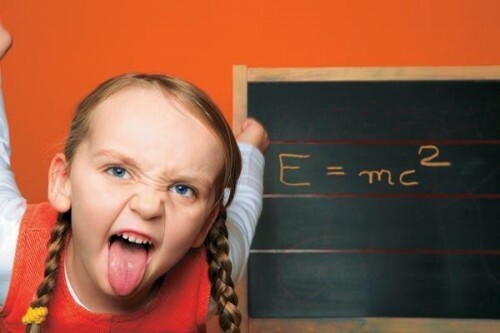Epilepsy: causes, symptoms, treatment
After this, the seizures themselves begin, in the first tonic, in which all the muscles contract and the person freezes motionless, and then the clonic ones - in which the patient begins to shake.During this period, he can cause serious injuries up to fractures.
After the end of an attack( after 1-2 minutes) a person falls into a deep sleep.When a patient wakes up, she does not remember anything about her bout, except for the very beginning.
There are so-called small seizures, or absences, in which seizures are not available.Instead, a person experiences a short-term loss of consciousness.However, it is possible the appearance of motor automatisms - involuntary stereotyped movements.The absences usually lasts a few seconds.
Finally, the focal seizures that arise in cases where the brain has a clear focus of excitation generating pathological nerve impulses.Symptomatic of such seizures is very diverse and depends on which part of the brain the hearth is located in.Often the focal seizure becomes generalized.
Diagnosis of epilepsy
First of all, the doctor must find out all the details of both this attack and previous ones.With focal epilepsies, information about the type of seizures can give a lot of information about which part of the brain is the pathological focus.However, without instrumental research it still does not do.
The main method for diagnosing epilepsy is an electroencephalogram.EEG criteria are included in the classification of this disease and greatly facilitate the detection of this pathology.
There are several types of this study:
-
 In EEG during the inter-attack period, data can not be obtained in 50% of cases.However, the appointment of additional functional tests significantly increases the chances of finding various disorders of brain rhythms.
In EEG during the inter-attack period, data can not be obtained in 50% of cases.However, the appointment of additional functional tests significantly increases the chances of finding various disorders of brain rhythms. - Conduction of EEG during an attack almost always gives the necessary and sufficient information for diagnosis of epilepsy.
- Sometimes it is not possible to get data on epilepsy at the first EEG.Then the doctors conduct EEG monitoring for a long time.
Magnetoresonance tomography is used in all cases of focal seizures.Most often, such attacks are caused by the presence of any physical disorder in the brain structure, which can be detected by MRI.
Computer tomography of the brain is performed in cases of suspected tumors and with Stirge-Weber syndrome( a hereditary disease that affects the vessels of the meninges and facial skin).
In order to distinguish true epilepsy from a convulsive syndrome caused by other causes, patients also undergo a standardized set of studies, starting with a general blood test and ending with an ECG, chest x-ray, etc. These methods allow you to differentiate epileptic seizures from other diseases,For example, cardiac pathology or disturbances of water-electrocoliotic balance.
Complications and consequences of epilepsy
The main complication of epilepsy is the status epilepticus.This condition is characterized by a sequence of successive convulsive seizures, between which a person does not come to consciousness.The constant generation of pathological impulses, as well as disorders occurring in the body during the seizure, quickly lead to the development of a serious pathological condition - cerebral edema.
The second complication of an epileptic attack is trauma.Firstly, a person who is unconscious can fall on a hard surface after receiving a concussion.Secondly, an injury can occur when parts of the body get into moving mechanisms at the time of an attack.Thirdly, loss of consciousness during driving a vehicle is fraught with an accident.Cases of biting the tongue or cheeks during convulsive compression of the jaws are well known.Finally, with insufficient mineralization of bones, a super-powerful muscle contraction can cause a fracture.
Until the 20th century, there was an opinion that epileptics developed a special personality disorder.That's why until recently, psychiatrists have been treating this pathology.Now the fight against epilepsy is transferred to neurologists, and the opinion of a mental epileptic disorder is revised.It is believed that the changes in personality are not due to illness itself, but to the attitude towards the patient surrounding( the so-called "stigmatization"), his own feelings about some social restrictions.
Treatment of epilepsy
Treating epilepsy is a rather complex task and most often lasts a lifetime.From the quality of selection of drugs depends a lot - on the frequency of seizures to a person's ability to social adaptation.
Treat epilepsy usually on an outpatient basis. Therapy has several objectives:
-
 to stop the appearance of new seizures;
to stop the appearance of new seizures; - improve the prognosis for life and social adaptation;
- to improve the patient's quality of life;
- when remission is achieved - stop taking medications, not allowing the resumption of seizures.
According to various data, up to 70% of patients taking an adequately selected treatment completely get rid of seizures.However, in order to correctly select the drugs, the physician should examine the patient in detail, assigning him a maximum of examinations.In addition, it is necessary to convey to the patient and members of his family the importance of rigorous adherence to all recommendations, explaining what to expect from treatment and what side effects of drugs should be prepared.
From the doctor it is required not only to appoint tablets, but also to reveal those factors that contribute to the appearance of seizures - flickering light, lack of sleep, increased body temperature, physical and mental fatigue.Without elimination of provoking factors, drug treatment is often ineffective.
For the control of epilepsy, special anticonvulsants are used:
- valproic acid;
- gabapentin;
- carbamazepine;
- phenytoin;
- phenobarbital;
- clonazepam;
- lamotrigine;
- levetiracetam;
- oxacarbazepine;
- pregabalin;
- topiramate;
- primidon;
- is ethosuximide.
Treatment begins with the appointment of minimal doses of the drug with a gradual increase to obtain an effect - the disappearance of seizures.If necessary, drugs are changed, and the prescription of a set of drugs is also possible( in cases when monotherapy with one medicine is ineffective).
Hospitalized patients with epilepsy in only a few cases:
- at the first convulsive seizure for examination;
- in the development of epileptic status;
- for the surgical treatment of the disease.
Surgical treatment of epilepsy patients is subjected to reduce the severity of the disease.Before the operation, the patient is carefully examined to identify a focus of excitement in focal or generalized epilepsy.
First aid for epileptic seizure
A person who does not have medical knowledge and skills is not capable of preventing an attack, or interrupting it.However, this is not necessary.The essence of first aid for epilepsy during an attack is not to let the patient get hurt and not to harm him.

At the moment of unconsciousness, you must hold the patient falling, gently laying it on a flat surface.If necessary, drag it to a safe place.Immediately one must sit next to him, take his head with both hands and prevent it from striking it against the ground, floor, hard objects.Hands and feet do not need to be fixed: first, they are almost impossible to hold, and secondly, their patient will not be seriously injured.
During an attack, wipe the saliva, which can begin to be produced in excess.If possible, turn the patient's head sideways to avoid ingress of saliva into the respiratory tract.
Attention! Never try to unclasp the clenched teeth of the patient!The chewing muscle is the strongest muscle of the human body.You can not overcome her resistance, but it is quite capable of breaking the patient's jaw or knocking out his teeth.The ingress of fragments of teeth in the respiratory tract will cause asphyxia with the highest probability of death.
Epilepsy in children
 True epilepsy in children is usually detected by 12-16 years, although it may appear in any, even in infancy.In the latter case, the cause is most often the birth trauma.
True epilepsy in children is usually detected by 12-16 years, although it may appear in any, even in infancy.In the latter case, the cause is most often the birth trauma.
In children, the disease proceeds approximately the same as in adults, but children are more prone to complications due to their physiological characteristics.Functional deficiency of self-defense mechanisms from hypoxia leads to the fact that cerebral edema in children develops faster and is more severe.
Epilepsy should be distinguished from convulsions arising from other causes.Children's brain is more prone to excessive excitation, so it is easier to create pathological foci and zones that generate a flow of impulses that cause convulsions.This process is very often triggered by an increase in body temperature and does not constitute a true epilepsy.Febrile convulsions are a kind of reaction of the brain to increase in temperature, and they pass under the influence of special drugs and with the elimination of fever.Almost always, febrile convulsions disappear without a trace by the 3rd year of life.
Epilepsy is a chronic illness, which in most cases is not bad for treatment.An epileptic can be a full member of society, but only if he carefully treats medical appointments and does not interrupt the use of drugs.
Bozbey Gennady Andreevich, ambulance doctor



